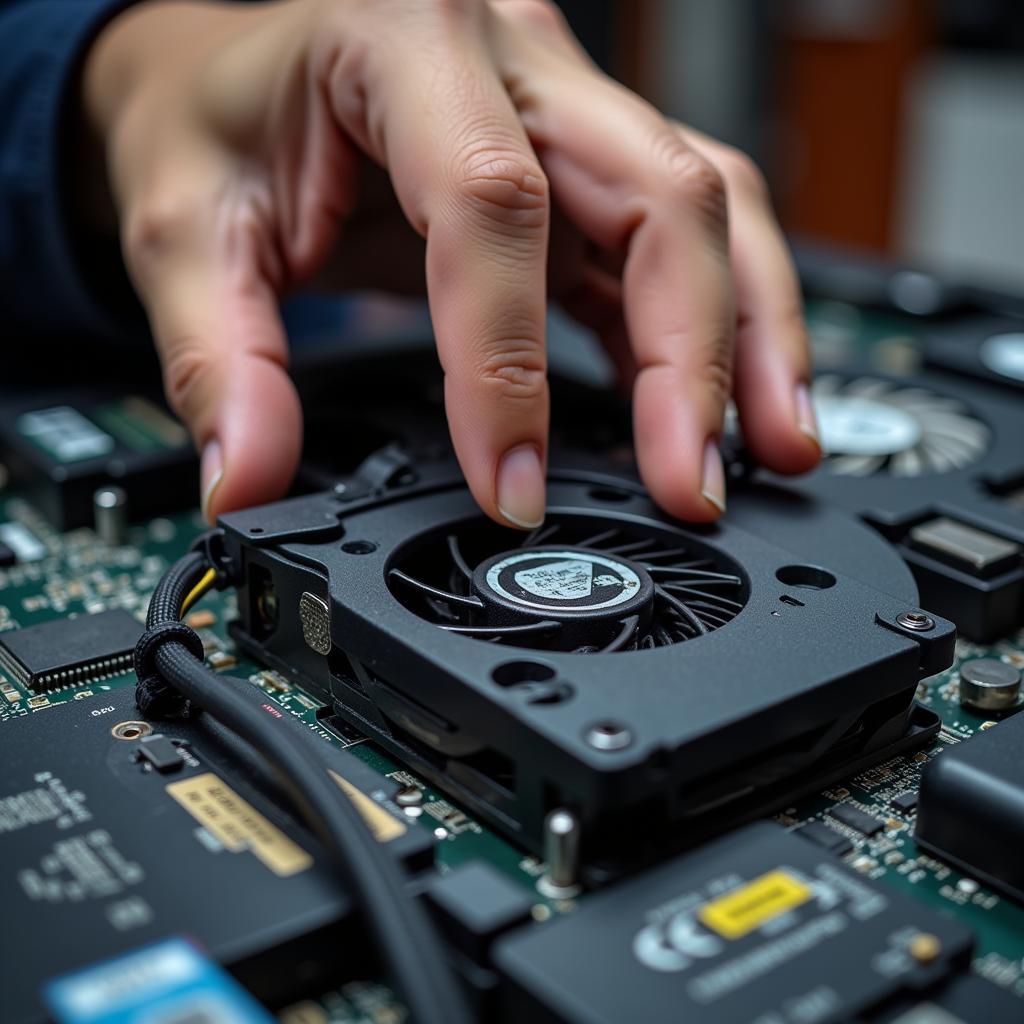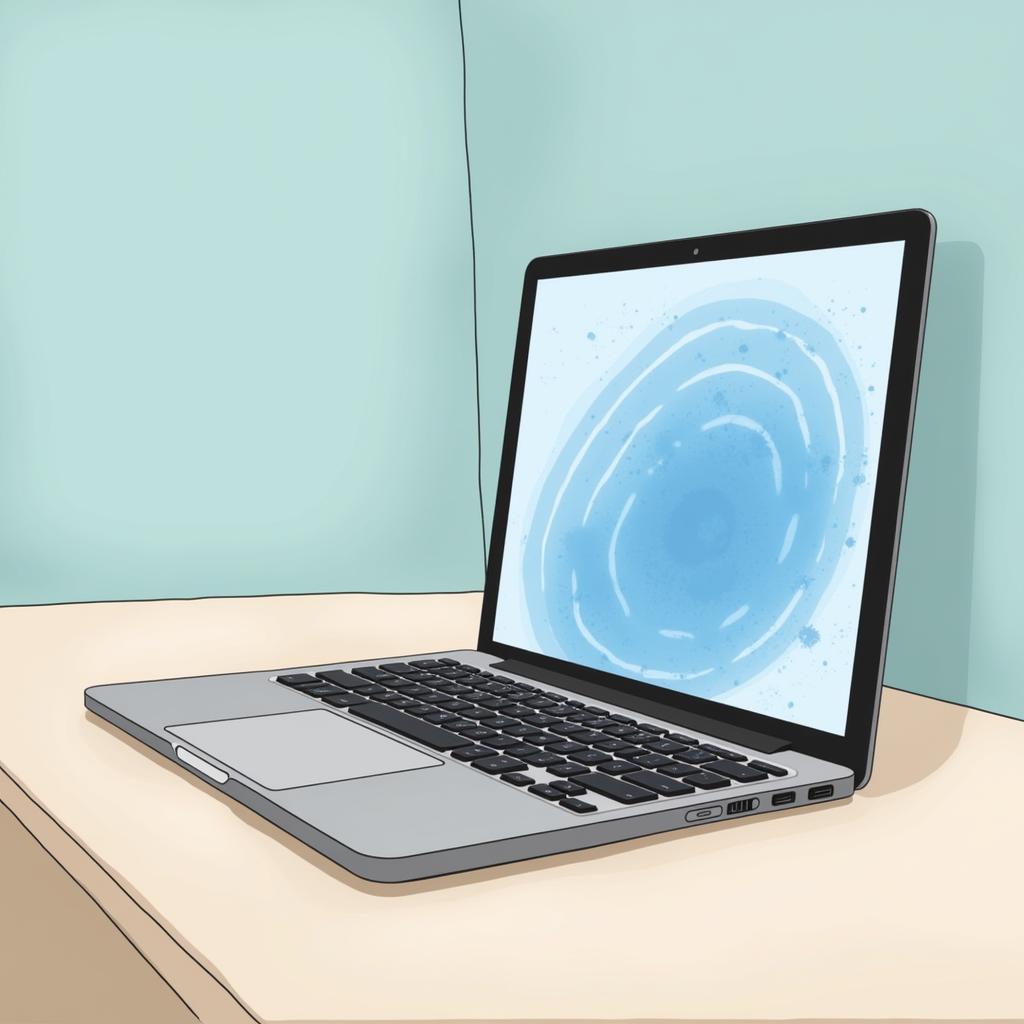Ensuring your laptop fan’s health is crucial for maintaining optimal performance and preventing potential hardware damage. Over time, dust, dirt, and debris can accumulate within the fan and heatsink, hindering airflow and leading to overheating issues. This comprehensive guide will walk you through the importance of regular checks, signs of a failing fan, and practical steps to keep it in top condition.
Why is Checking Laptop Fan Health Important?
A properly functioning laptop fan is essential for dissipating heat generated by the processor, graphics card, and other components. When the fan malfunctions, your laptop can experience:
- Overheating: Excessive heat can significantly reduce performance, causing lag, freezes, and unexpected shutdowns.
- Reduced Lifespan: Prolonged exposure to high temperatures can damage delicate components, shortening the lifespan of your laptop.
- System Instability: Overheating can lead to system crashes, data loss, and other stability issues.
- Increased Noise: A struggling fan often produces a loud, whirring noise, indicating a need for attention.
Signs Your Laptop Fan Needs Attention
Recognizing the warning signs of a failing fan can save you from costly repairs and data loss. Watch out for these common indicators:
- Excessive Heat: If your laptop feels unusually hot to the touch, especially on the bottom, it’s a clear sign of potential overheating.
- Loud Fan Noise: A consistently loud fan, even under low workload, suggests the fan is working overtime and may be failing.
- Performance Issues: Frequent lag, stuttering, and sudden shutdowns, particularly during demanding tasks, can indicate overheating due to a faulty fan.
- Error Messages: Some laptops display error messages related to fan failure or overheating, prompting immediate action.
How to Check Your Laptop Fan Health
 Inspecting Laptop Fan
Inspecting Laptop Fan
Before diving into solutions, it’s crucial to determine if your fan is indeed the culprit. Here’s how you can check its health:
1. Listen Carefully
Power on your laptop and pay close attention to the fan noise. Is it louder than usual? Does it make a grinding or clicking sound? These are often early indicators of fan issues.
2. Feel for Excessive Heat
Gently touch the bottom of your laptop, especially near the fan vents. If it feels uncomfortably hot, your fan might be struggling to dissipate heat effectively.
3. Monitor CPU Temperature
Utilize built-in system utilities or third-party software to monitor your CPU temperature. Abnormally high temperatures, especially under normal usage, point towards a cooling system problem.
4. Visually Inspect the Fan
If comfortable doing so, carefully open your laptop’s back panel (refer to your manufacturer’s instructions). Check for dust buildup on the fan blades and heatsink.
Solutions for Laptop Fan Problems
 Laptop Cleaning Kit
Laptop Cleaning Kit
Once you’ve identified a fan issue, here are some effective solutions:
1. Clean the Fan and Heatsink
- Power off your laptop and unplug it from the power source.
- Use compressed air to blow away dust from the fan blades and heatsink. Hold the can upright and use short bursts to avoid damaging the components.
- Gently use a soft-bristled brush to remove any stubborn dust particles.
2. Update Drivers
Outdated or corrupted drivers can sometimes interfere with fan operation. Visit your laptop manufacturer’s website and download the latest drivers for your specific model.
3. Adjust Power Settings
High-performance power plans often push the CPU and GPU harder, generating more heat. Consider switching to a balanced or power-saving plan for everyday tasks.
4. Use a Cooling Pad
A cooling pad provides additional airflow to your laptop, reducing its operating temperature. This can be particularly helpful for demanding tasks or during hot weather.
5. Seek Professional Help
If the problem persists despite trying these solutions, it’s best to seek professional help from a qualified technician. They can diagnose and address more complex issues, including fan replacement if necessary.
Tips for Preventing Future Fan Problems
 Laptop on a Flat Surface
Laptop on a Flat Surface
Preventing fan issues is always better than dealing with their consequences. Follow these proactive tips:
- Regular Cleaning: Clean your laptop’s fan and vents every 3-6 months, or more frequently if used in dusty environments.
- Proper Ventilation: Ensure adequate airflow by using your laptop on a hard, flat surface and avoiding soft surfaces like beds or carpets.
- Avoid Extreme Temperatures: Don’t expose your laptop to extreme heat or cold, as this can impact fan performance and overall system stability.
- Monitor System Performance: Pay attention to any unusual fan noise or performance drops, addressing them promptly.
Conclusion
Regularly checking your laptop fan health is a simple yet crucial aspect of maintaining optimal performance and extending its lifespan. By understanding the signs of a failing fan and following the cleaning and preventative measures outlined in this guide, you can keep your laptop running smoothly for years to come. Remember, a little care goes a long way in ensuring your valuable device stays cool and efficient.
FAQs about Laptop Fan Health
Q: How often should I clean my laptop fan?
A: It’s generally recommended to clean your laptop fan every 3-6 months. However, if you use your laptop in a dusty environment, you may need to clean it more often.
Q: Can I replace my laptop fan myself?
A: While it’s possible to replace a laptop fan yourself, it’s recommended to seek professional help unless you’re comfortable with disassembling your laptop.
Q: Is it normal for my laptop fan to make noise?
A: Some fan noise is normal, especially during demanding tasks. However, excessive or unusual noises, like grinding or clicking, could indicate a problem.
Q: What are some signs that my laptop is overheating?
A: Signs of overheating include excessive heat on the laptop’s surface, loud fan noise, performance issues, and unexpected shutdowns.
Q: How can I monitor my CPU temperature?
A: You can monitor your CPU temperature using built-in system utilities or third-party software available online.
For further assistance with your laptop fan or any other technical issues, feel free to reach out to our team at Phone Number: 0903426737, Email: fansbongda@gmail.com. You can also visit us at our address: Hamlet 9, Ward 6, Gieng Day Town, Ha Long City, Quang Ninh, Vietnam. We have a dedicated customer support team available 24/7 to assist you.
We also have numerous articles on our website about other laptop maintenance tips and troubleshooting guides. You can find relevant information about Lenovo X220 fan or fan check laptop by following these links. For a deeper understanding of laptop disassembly and cleaning, we recommend checking out our guide on Acer E5 471G disassembly and fan cleaning. If you’re curious about specific fan types, you might find our article on “handy fan là gì” insightful. We strive to provide you with the information you need to keep your devices running smoothly.


